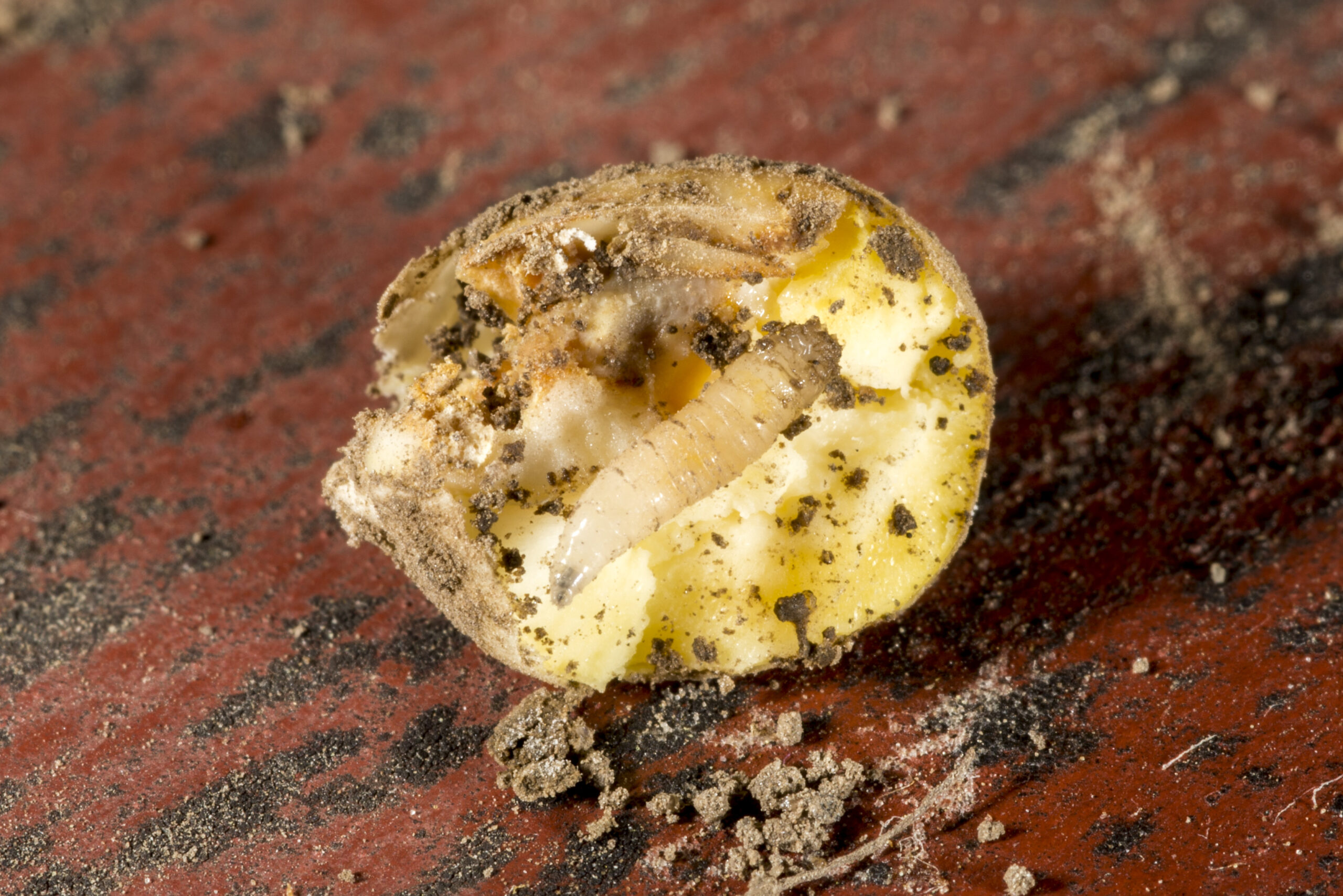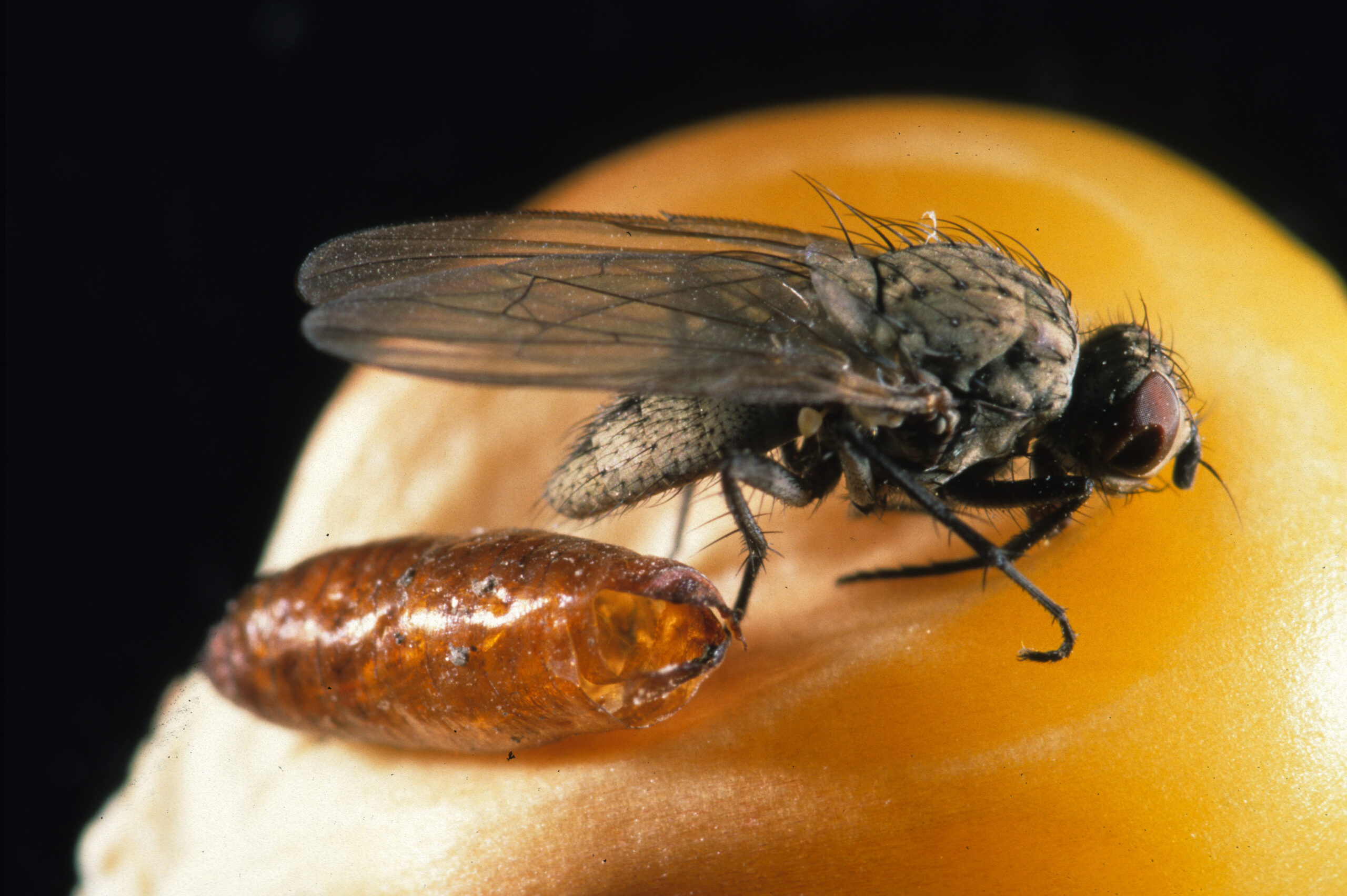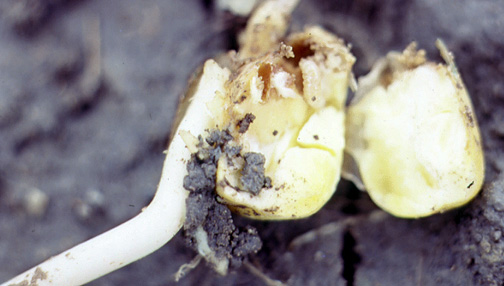Seedcorn Maggots (Corn)
Delia platura Meigen
Search the Pest & Crop Newsletter

The ability to see these full-sized life-cycle images is currently disabled to resolve an issue.
Appearance and Life History

Photo by J. Obermeyer
The seedcorn maggot is an early season pest of corn and other crops. It is likely to be more of a problem during damp, cool seasons and in manured or reduced tillage fields with decaying residue.
The seedcorn maggot is a pale, yellowish-white maggot found burrowing into corn seeds. Full grown maggots are legless, about 1/4 inch (6 mm) long, cylindrical, narrow and tapered. Maggots lack heads and legs, but have small black mouth hooks in front.
The adult, which resembles a small house fly, is a gray to brown fly about 1/5 inch (5 mm) long that can be easily seen flying over freshly worked soil or where manure has been previously spread. They seek rotting material, animal or plant origin, in which to lay their eggs next to.
The entire seedcorn maggot life cycle requires no more than 21 days, resulting in 3 or more generations each year. Later generations are of little to no economic importance to corn.
Damage

Photo by J. Obermeyer
Seedcorn maggots burrow into the seed, often destroying the germ. Damaged seeds fail to germinate, leaving large gaps in the stand. Maggot damage, unlike wireworm damage, usually covers large areas of a field. Land that is heavily manured, or where a cover crop is turned under, may be attractive to egg-laying flies in the spring. Stressed and slow growing plants are most vulnerable.
Sampling Method
- Examine soil by digging in areas where plants have failed to emerge. Check ungerminated seed for injury and presence of maggots or pupal cases.
- Examine seeds for damage. Record the number of plants, good (sound) ungerminated seeds, and hollowed-out or otherwise damaged seeds in each area sampled.
Management Guidelines

Photo by J. Obermeyer
Corn Insect Control Recommendations:
Since there are no rescue treatments for control of seedcorn maggot, replanting is the only available management option. Decision to replant should be based on the remaining healthy plant population, date, yield expectation, etc. Seed treatments offer some control, but may be inconsistent – particularly if cool/wet conditions persist. If replanting before June, a seed treatment and/or soil insecticide may be advisable. As temperature and humidity rise during the summer, seed corn maggot adults are often attacked by fungal pathogens. The infected flies are found dead and in large numbers clinging to crops, weeds, etc.


Photo by J. Obermeyer
As temperature and humidity rises during the summer, seedcorn maggot adults are often attacked by fungal pathogens. The infected flies are found dead in large numbers clinging to crops, weeds, etc.
